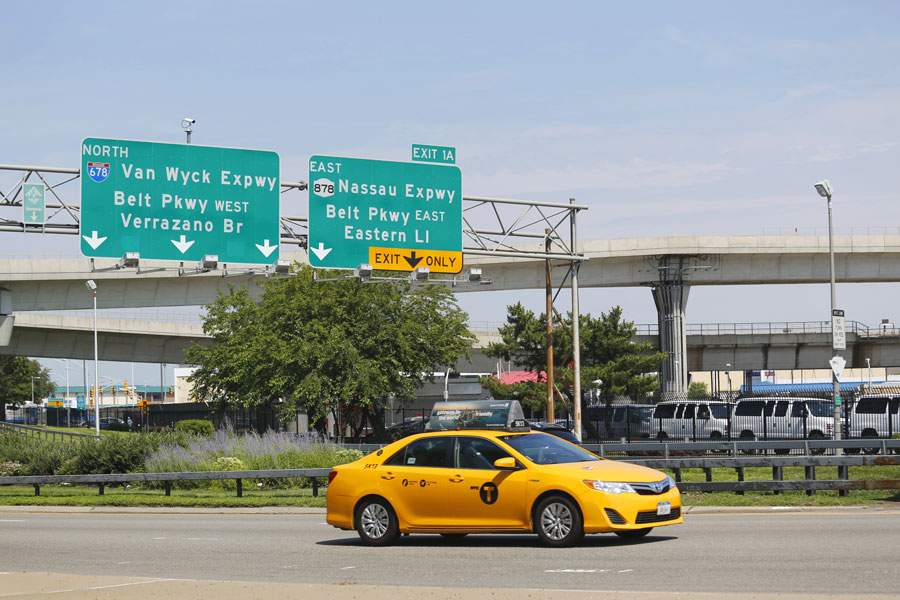Van Wyck Expressway (I-678)

The Van Wyck Expressway, officially designated Interstate 678 (I-678), is one of New York City’s busiest highways and an essential connector between Long Island, Queens, and the rest of the city. Running north–south through Queens, it provides the primary roadway access to John F. Kennedy International Airport while linking to major highways such as the Grand Central Parkway, Belt Parkway, and Whitestone Expressway. For millions of travelers, both local commuters and international visitors, the Van Wyck is one of the most recognized expressways in New York.
History
- Construction & Opening: Planned in the 1930s and built in the 1940s, the expressway was named for Robert Anderson Van Wyck, the first mayor of New York City after consolidation in 1898.
- Early Role: It was originally constructed to provide a fast route from the Whitestone Bridge through Queens and south to Jamaica.
- JFK Access: With the expansion of Idlewild Airport (later renamed JFK International Airport), the Van Wyck became the airport’s main approach highway.
- Modernization: In recent decades, the Van Wyck has undergone multiple widening projects and interchange improvements, especially to ease congestion around JFK and Kew Gardens Interchange.
Route and Significance
- Southern Terminus: Interchange with the Belt Parkway and Nassau Expressway (NY 878) near JFK Airport.
- Northern Terminus: Extends to the Whitestone Expressway and Whitestone Bridge in College Point/Whitestone, Queens.
- Length: Approximately 14 miles.
- Primary Role: Direct highway link between JFK Airport and other major New York expressways.
The Van Wyck Expressway provides critical connections for:
- JFK Airport – Main roadway serving passengers and cargo.
- Long Island – Links directly to the Belt Parkway and Nassau Expressway for eastbound travel.
- Bronx & New England – Continues north via the Whitestone Bridge (I-678) into the Bronx and Westchester.
- Queens & Manhattan – Access via the Grand Central Parkway to Manhattan and LaGuardia Airport.
Exits (South to North)
| Exit | Destinations |
|---|---|
| 1W / 1E | Belt Parkway West / Belt Parkway East, Nassau Expressway (NY 878), Kennedy Airport |
| 2 | Rockaway Boulevard – South Ozone Park |
| 3 | Linden Boulevard – Ozone Park, South Jamaica |
| 4 | Liberty Avenue – Jamaica |
| 5 | Atlantic Avenue – Brooklyn, Woodhaven |
| 6 | Jamaica Avenue – Queens, Richmond Hill |
| 7 | Jackie Robinson Parkway – Brooklyn, Queens |
| 8 | Grand Central Parkway (I-278, I-495) – Triborough Bridge, Long Island Expressway |
| 9 | Northern Boulevard (NY 25A) – Flushing, Citi Field |
| 10 | Whitestone Expressway – Whitestone Bridge, Bronx, New England |
Notable Facts
- Known for heavy congestion, especially near JFK Airport and the Kew Gardens Interchange.
- Officially named for Robert A. Van Wyck, New York City’s first mayor.
- The Van Wyck is one of the busiest expressways in the United States for airport traffic.
- Major projects are underway to modernize the roadway, including additional lanes and improved ramps near JFK.
Area Snapshot
| Feature | Details |
|---|---|
| Opened | 1940s |
| Length | ~14 miles |
| Southern Terminus | Belt Parkway / Nassau Expressway (JFK Airport) |
| Northern Terminus | Whitestone Expressway / Whitestone Bridge (Bronx) |
| Primary Role | Direct access to JFK Airport and connector to major highways |
| Restrictions | Open to all vehicles (not a limited parkway like Cross Island or Belt) |
The Van Wyck Expressway is one of the most important highways in New York City, serving as the lifeline between JFK International Airport, Long Island, and the rest of the metropolitan area. While often associated with congestion, its role as the airport’s primary approach makes it indispensable for millions of travelers each year. For Long Islanders heading to flights or beyond the city, the Van Wyck is the unavoidable gateway that continues to define Queens’ transportation landscape.

